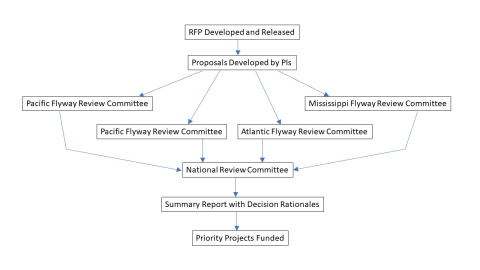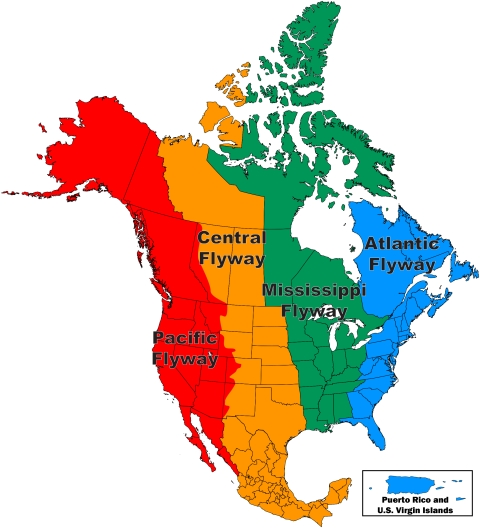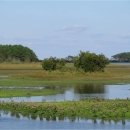What We Do
The USFWS Project Officer for the WMGB Program distributes an annual request for proposals (RFP) in September to USFWS Flyway Representatives, Regional Migratory Bird Coordinators, USGS-Biological Research Division (BRD) Regional Offices, and the USGS Cooperative Research Units office. In addition, the funding opportunity is posted at Grants.gov. Flyway Representatives are responsible for distributing the RFP to biologists in their respective states. State biologists, in turn, are asked to send the information to other state personnel, universities, and any others who may be interested. Migratory Bird Coordinators forward the letter to National Wildlife Refuges and other federal offices. USGS-BRD Regional Offices are asked to forward the RFP to all their respective Science and Technology Centers, while the Cooperative Research Units office distributes the RFP to all Cooperative Fish and Wildlife Research Units. Funding proposals may be submitted for any webless migratory game bird identified in the Species section. Proposals may be oriented toward research or management-related projects. At least 1/3 of the total project cost must come from a funding source other than the WMGB Program. In- kind services, such as salaries of state employees and vehicle expenses, are acceptable as matching funds. Additionally, a letter of support is required for each proposal from the state in which it originates. Proposals for the program are due in November each year.
Four regional review committees (Fig. 1) that follow the boundaries of the North American Flyways (Fig. 2) rank all proposals submitted to the program. The Flyway-based committees are composed of individuals with knowledge of the research and management needs for these species. The chairperson of each Flyway-based review committee serves on a National Review Committee (NRC), which makes final project selections based on input from each Flyway-based committee. The NRC is composed of the Flyway- based Chairs, the U.S. Fish and Wildlife Service Program Manager, and Representatives from the Migratory Shore and Upland Game Bird Working Group. The NRC evaluates and ranks proposals based on how well the proposals address the priority information needs that have been identified for the 16 species of Migratory Shore and Upland Game Birds. After project selection, the NRC is responsible for developing an explanation documenting why successful projects were selected for funding. In addition, the NRC provides unsuccessful applicants with comments on why their project was not funded.
Text from this webpage was taken directly from the following: Dolton, D.D., and T. R. Cooper. 2012. History and Administration of the Webless Migratory Game Bird Program, 1995-2012. In Webless Migratory Game Bird Program, Project Abstracts – 2010 and 2011. United States Department of the Interior, Fish and Wildlife Service, Bloomington, MN USA. 140p.
Our Programs
Our Services
The Webless Migratory Game Bird Program provides funding for projects that address priority information needs for webless migratory gamebirds. The next anticipated call for proposals will be November 2024.



